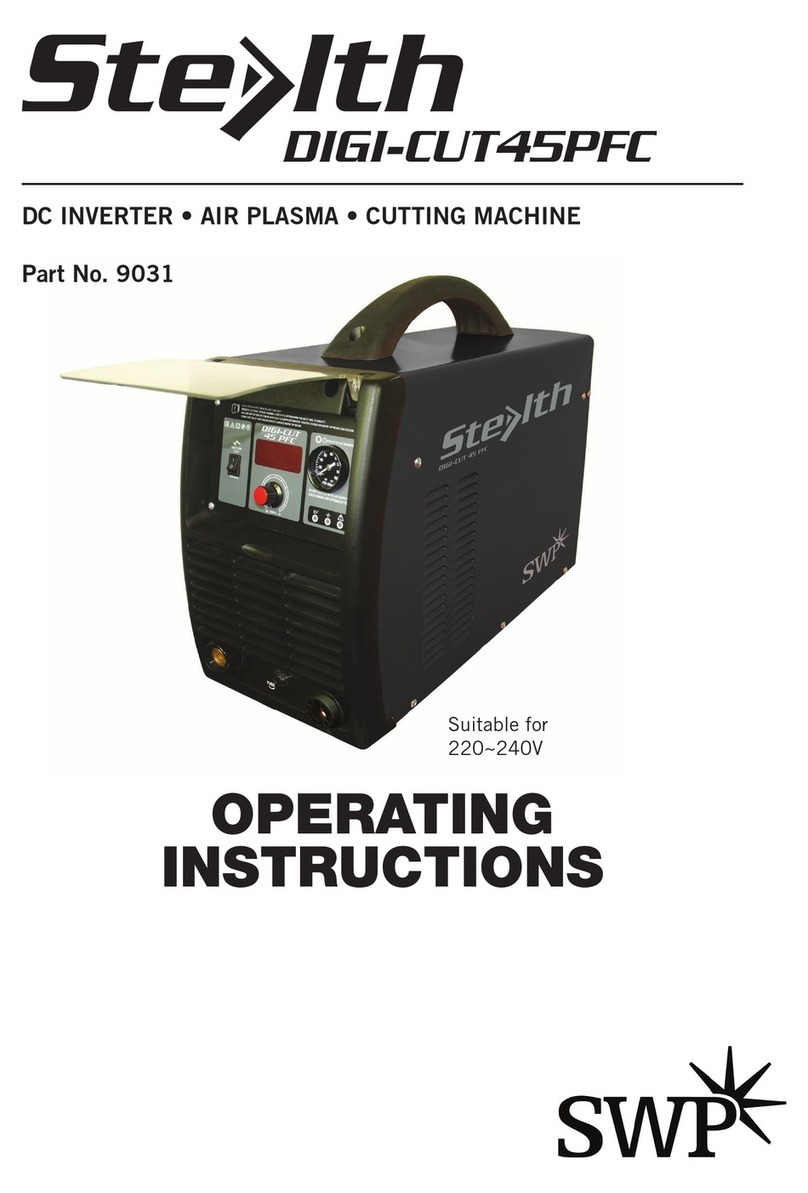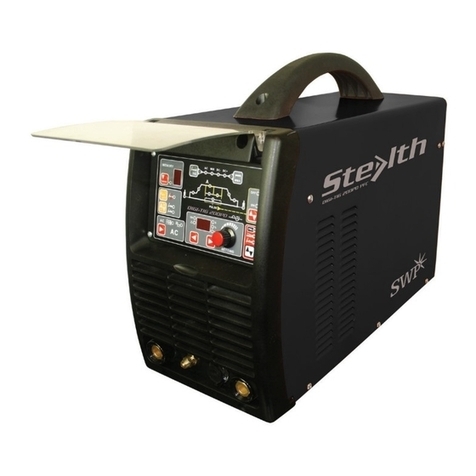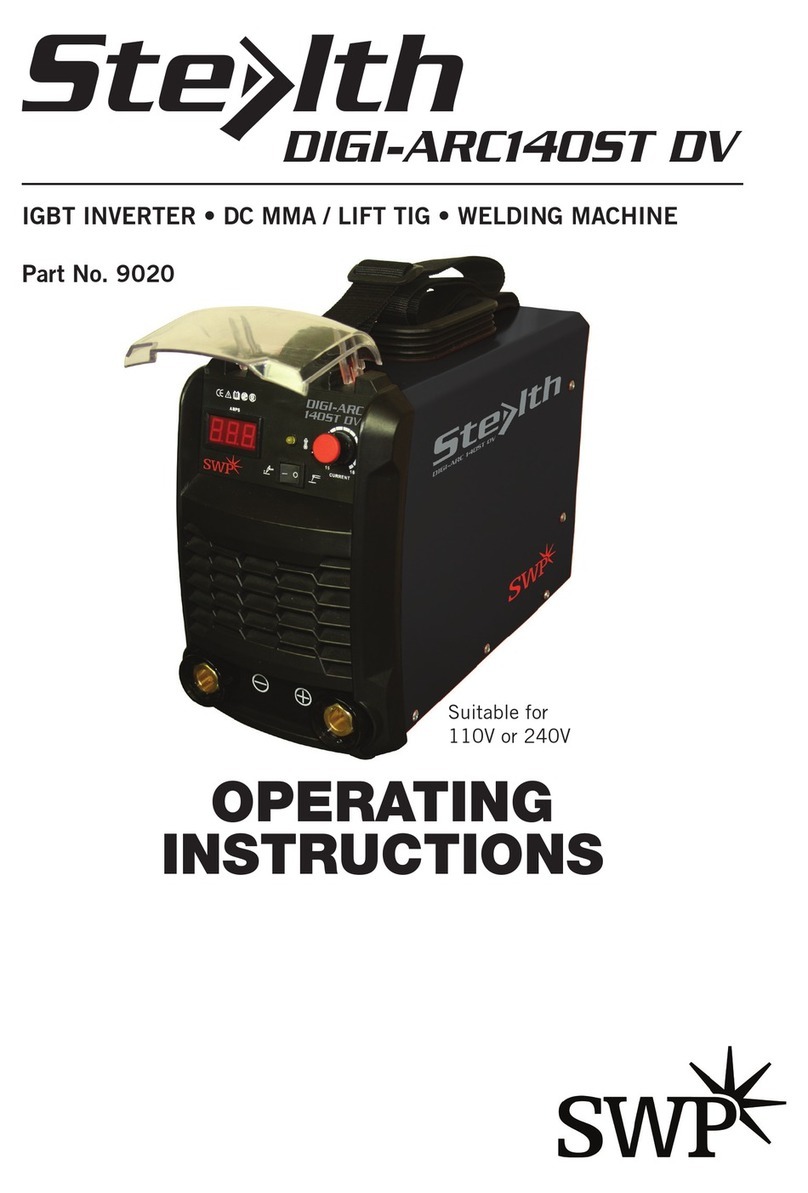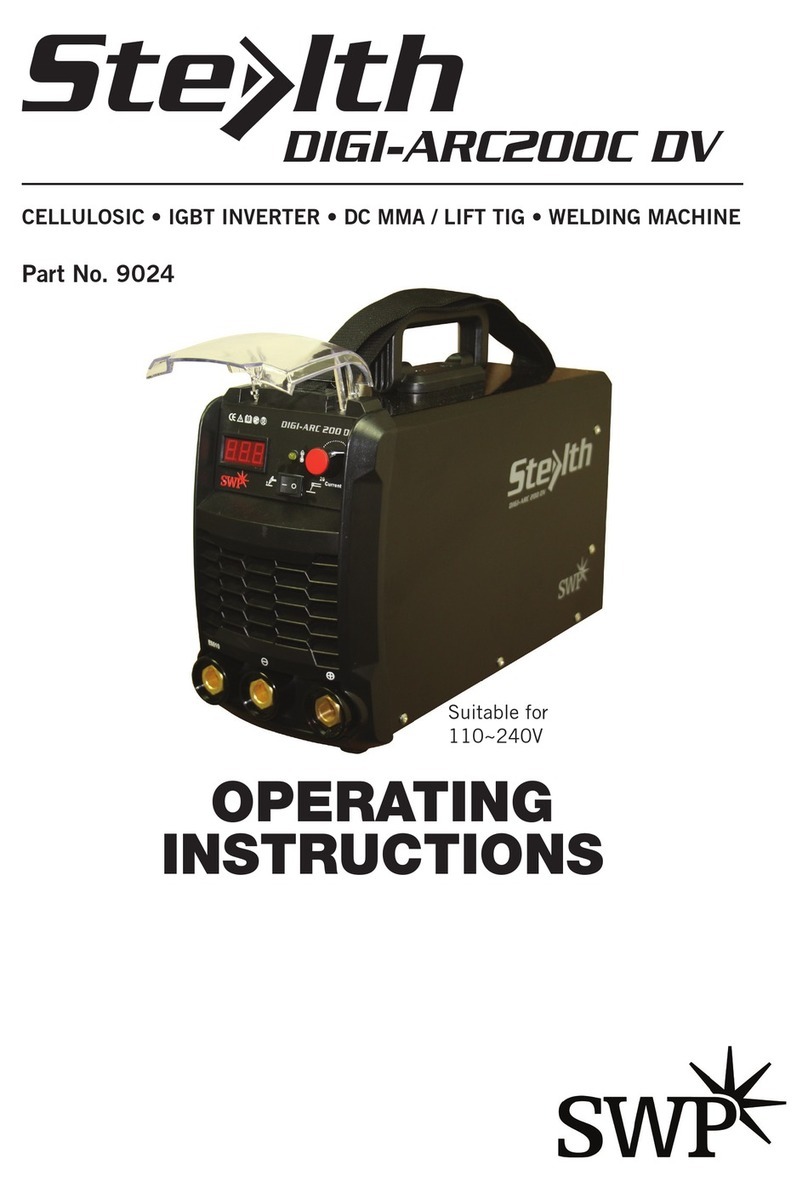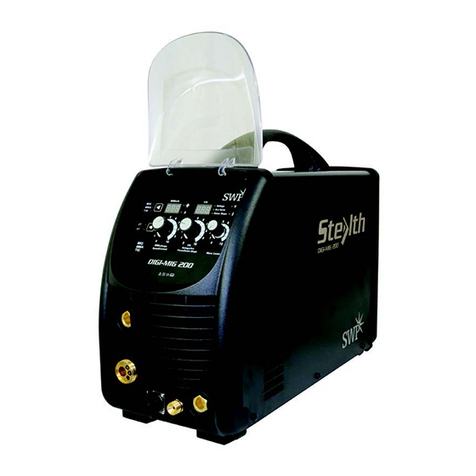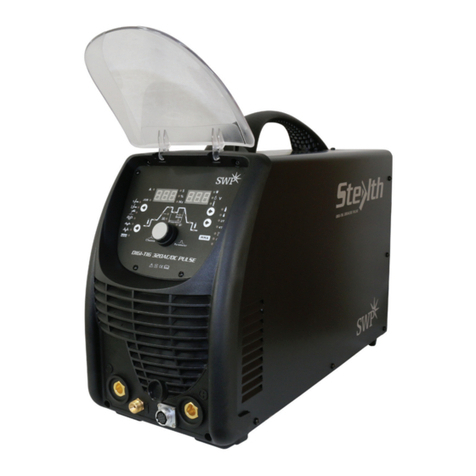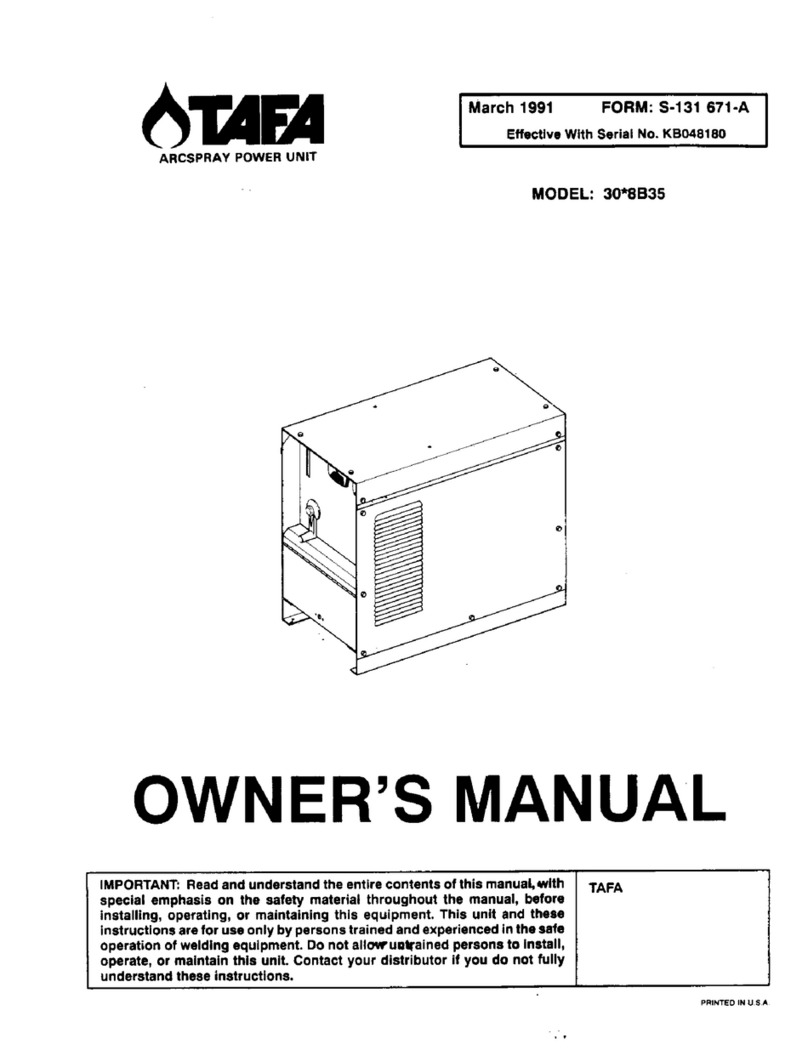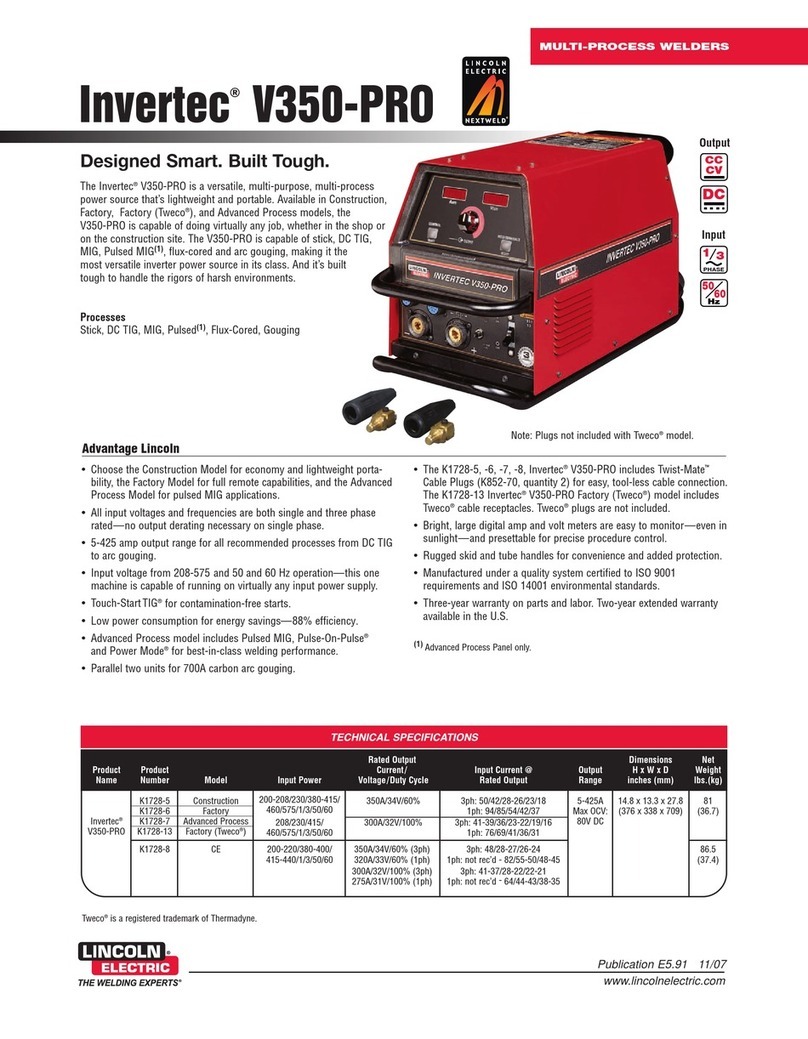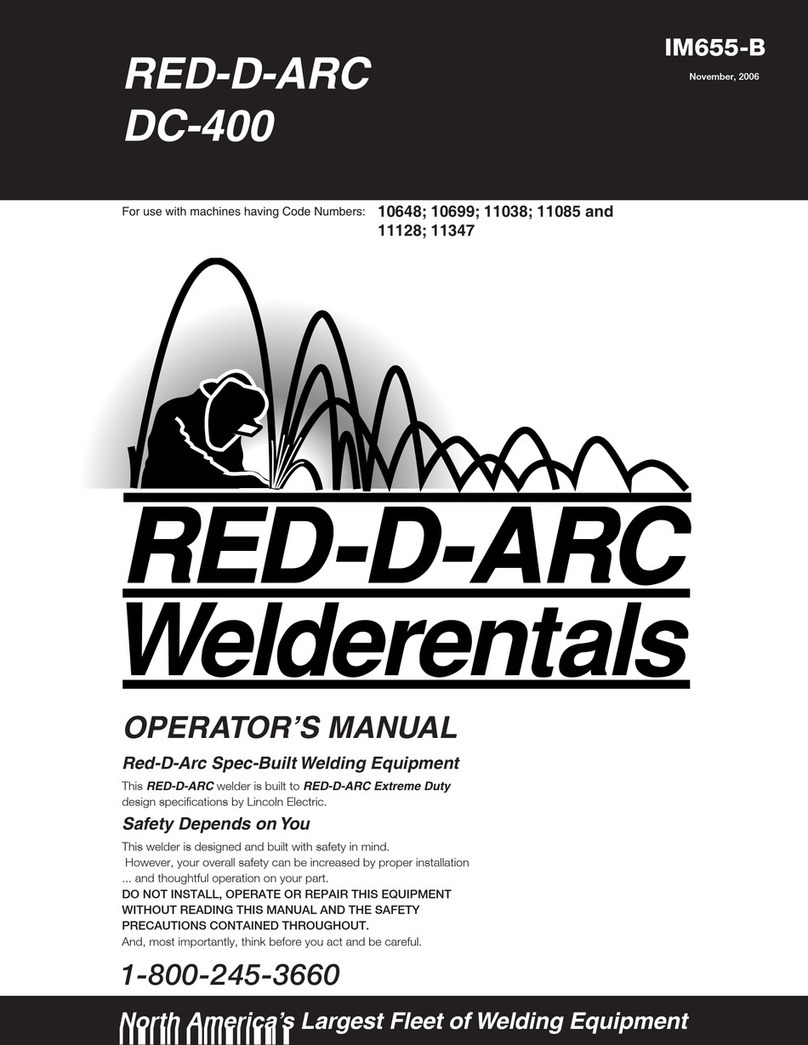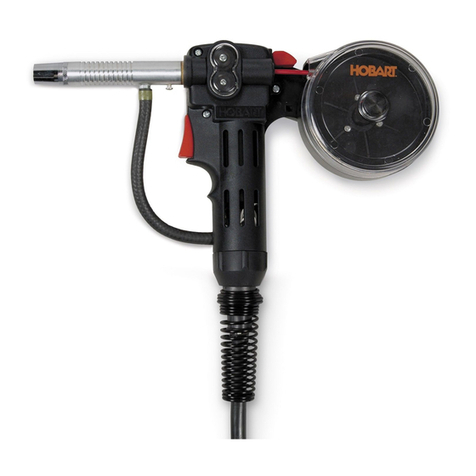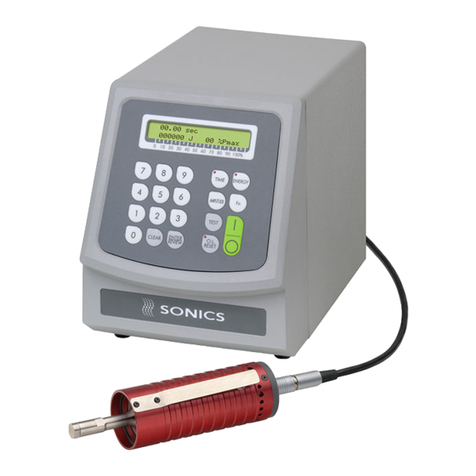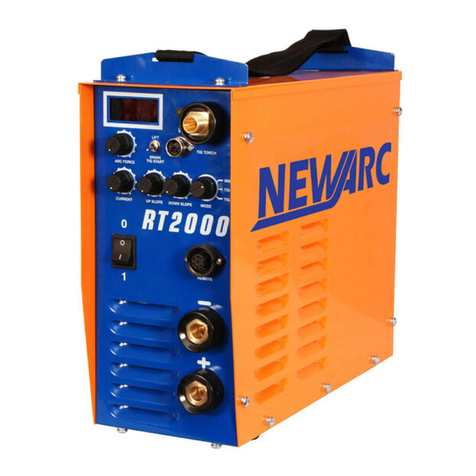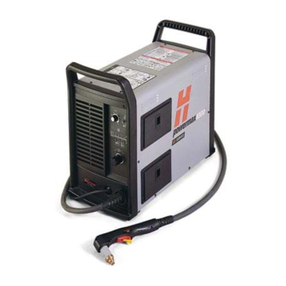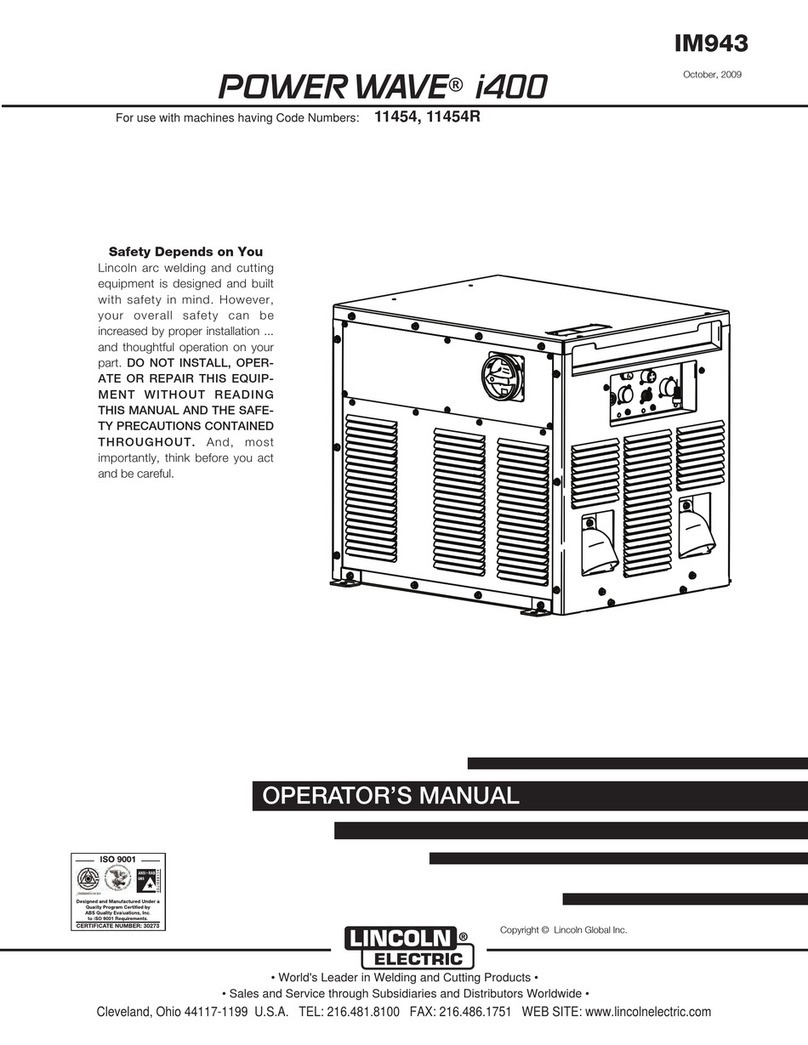
OPERATION AND MAINTENANCE OF PLASMA ARC EQUIPMENT CAN BE
DANGEROUS AND HAZARDOUS TO YOUR HEALTH
Plasma arc cutting produces intense electric and magnetic emissions that may
interfere with the proper function of cardiac pacemakers, hearing aids, or other
electronic health equipment. Persons who work near plasma arc cutting applications
should consult their medical health professional and the manufacturer of the health
equipment to determine whether a hazard exists.
To prevent possible injury, read, understand and follow all warnings, safety precautions
and instructions before using the equipment.
GASES AND FUMES
Gases and fumes produced during the plasma cutting process can be dangerous and
hazardous to your health.
• Keep all fumes and gases from the breathing area. Keep your head out of the
cutting fume plume.
• Use an air-supplied respirator if ventilation is not adequate to remove all fumes and
gases.
• The types of fumes and gases from the plasma arc depend on the kind of metal
being used, metal coatings, and the different processes. You must be very careful
when cutting any metals which may contain one or more of the following:
Antimony Chromium Mercury Beryllium
Arsenic Cobalt Nickel Lead
Barium Copper Selenium Silver
Cadmium Manganese Vanadium
Always read the Material Safety Data Sheets (MSDS) that should be supplied with the
material you are using.
These MSDS will give you the information regarding the kind and amount of fumes and
gases that may be dangerous to your health.
• Use special equipment, such as water or down draft cutting tables, to capture fumes
and gases.
• Do not use the plasma torch in an area where combustible or explosive gases or
materials are located.
• Phosgene, a toxic gas, is generated from the vapours of chlorinated solvents and
cleansers. Remove all sources of these vapours.
ELECTRIC SHOCK
Electric Shock can injure or kill. The plasma arc process uses and produces high
voltage electrical energy.
This electric energy can cause severe or fatal shock to the operator or others in the
workplace.
• Never touch any parts that are electrically ‘live’ or ‘hot’.
• Wear dry gloves and clothing. Insulate yourself from the work piece or other parts of
the cutting circuit.
• Repair or replace all worn or damaged parts.
• Extra care must be taken when the workplace is moist or damp.
STEALTH DIGI-CUT 60-1
1. SAFETY
4
§1 SAFETY
Important Safety Precautions
OPERATION AND MAINTENANCE OF PLASMA ARC EQUIPMENT CAN BE DANGEROUS AND
HAZ- ARDOUS TO YOUR HEALTH.
Plasma arc cutting produces intense electric and magnetic emissions that may interfere with the proper function
of cardiac pacemakers, hearing aids, or other electronic health equipment. Persons who work near plasma arc cutting
applications should consult their medical health professional and the manufacturer of the health equipment to deter-
mine whether a hazard exists.
To prevent possible injury, read, understand and follow all warnings, safety precautions and instructions before
using the equipment.
GASES AND FUMES
Gases and fumes produced during the plasma cutting process can be dangerous and hazardous to your health.
• Keep all fumes and gases from the breathing area. Keep your head out of the cutting fume plume.
• Use an air-supplied respirator if ventilation is not adequate to remove all fumes and gases.
• The kinds of fumes and gases from the plasma arc depend on the kind of metal being used, coatings on the
metal, and the different processes. You must be very careful when cutting or cutting any metals which may contain
one or more of the following:
Always read the Material Safety Data Sheets (MSDS) that should be supplied with the material you are using.
These MSDSs will give you the information regarding the kind and amount of fumes and gases that may be
dangerous to your health.
• Use special equipment, such as water or down draft cutting tables, to capture fumes and gases.
• Do not use the plasma torch in an area where combustible or explosive gases or materials are located.
• Phosgene, a toxic gas, is generated from the vapors of chlorinated solvents and cleansers. Remove all sources
of these vapors.
ELECTRIC SHOCK
Electric Shock can injure or kill. The plasma arc process uses and produces high voltage electrical energy.
This electric energy can cause severe or fatal shock to the operator or others in the workplace.
• Never touch any parts that are electrically “live” or “hot.”
1
§1 SAFETY
Important Safety Precautions
OPERATION AND MAINTENANCE OF PLASMA ARC EQUIPMENT CAN BE DANGEROUS AND
HAZ- ARDOUS TO YOUR HEALTH.
Plasma arc cutting produces intense electric and magnetic emissions that may interfere with the proper function
of cardiac pacemakers, hearing aids, or other electronic health equipment. Persons who work near plasma arc cutting
applications should consult their medical health professional and the manufacturer of the health equipment to deter-
mine whether a hazard exists.
To prevent possible injury, read, understand and follow all warnings, safety precautions and instructions before
using the equipment.
GASES AND FUMES
Gases and fumes produced during the plasma cutting process can be dangerous and hazardous to your health.
• Keep all fumes and gases from the breathing area. Keep your head out of the cutting fume plume.
• Use an air-supplied respirator if ventilation is not adequate to remove all fumes and gases.
• The kinds of fumes and gases from the plasma arc depend on the kind of metal being used, coatings on the
metal, and the different processes. You must be very careful when cutting or cutting any metals which may contain
one or more of the following:
Always read the Material Safety Data Sheets (MSDS) that should be supplied with the material you are using.
These MSDSs will give you the information regarding the kind and amount of fumes and gases that may be
dangerous to your health.
• Use special equipment, such as water or down draft cutting tables, to capture fumes and gases.
• Do not use the plasma torch in an area where combustible or explosive gases or materials are located.
• Phosgene, a toxic gas, is generated from the vapors of chlorinated solvents and cleansers. Remove all sources
of these vapors.
ELECTRIC SHOCK
Electric Shock can injure or kill. The plasma arc process uses and produces high voltage electrical energy.
This electric energy can cause severe or fatal shock to the operator or others in the workplace.
• Never touch any parts that are electrically “live” or “hot.”
1
§1 SAFETY
Important Safety Precautions
OPERATION AND MAINTENANCE OF PLASMA ARC EQUIPMENT CAN BE DANGEROUS AND
HAZ- ARDOUS TO YOUR HEALTH.
Plasma arc cutting produces intense electric and magnetic emissions that may interfere with the proper function
of cardiac pacemakers, hearing aids, or other electronic health equipment. Persons who work near plasma arc cutting
applications should consult their medical health professional and the manufacturer of the health equipment to deter-
mine whether a hazard exists.
To prevent possible injury, read, understand and follow all warnings, safety precautions and instructions before
using the equipment.
GASES AND FUMES
Gases and fumes produced during the plasma cutting process can be dangerous and hazardous to your health.
• Keep all fumes and gases from the breathing area. Keep your head out of the cutting fume plume.
• Use an air-supplied respirator if ventilation is not adequate to remove all fumes and gases.
• The kinds of fumes and gases from the plasma arc depend on the kind of metal being used, coatings on the
metal, and the different processes. You must be very careful when cutting or cutting any metals which may contain
one or more of the following:
Always read the Material Safety Data Sheets (MSDS) that should be supplied with the material you are using.
These MSDSs will give you the information regarding the kind and amount of fumes and gases that may be
dangerous to your health.
• Use special equipment, such as water or down draft cutting tables, to capture fumes and gases.
• Do not use the plasma torch in an area where combustible or explosive gases or materials are located.
• Phosgene, a toxic gas, is generated from the vapors of chlorinated solvents and cleansers. Remove all sources
of these vapors.
ELECTRIC SHOCK
Electric Shock can injure or kill. The plasma arc process uses and produces high voltage electrical energy.
This electric energy can cause severe or fatal shock to the operator or others in the workplace.
• Never touch any parts that are electrically “live” or “hot.”
1
